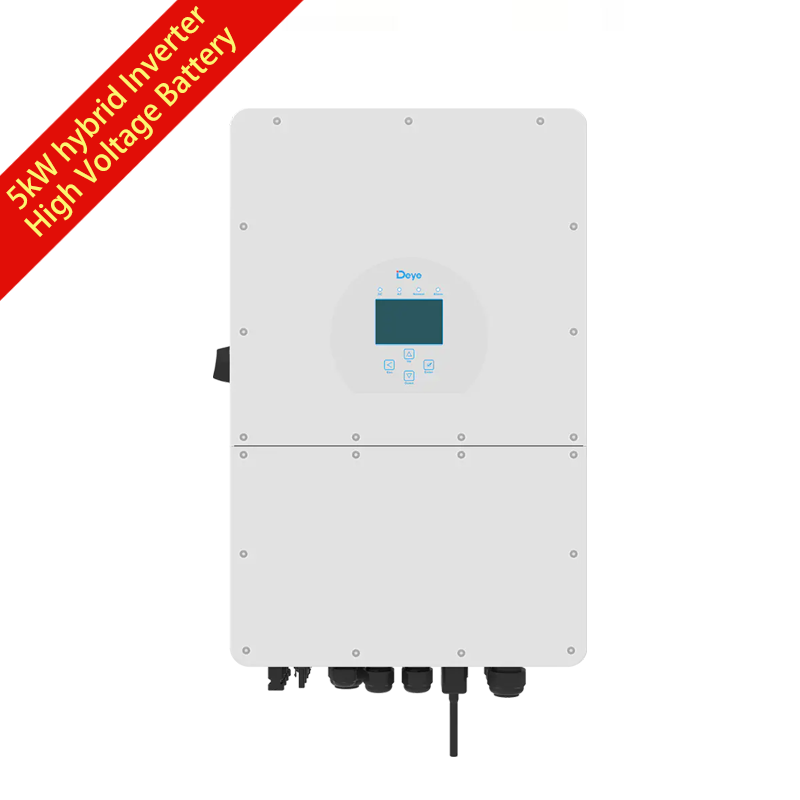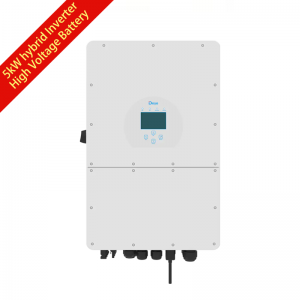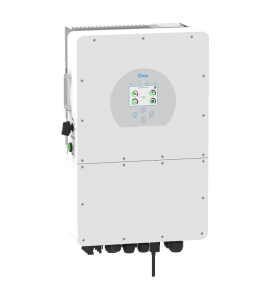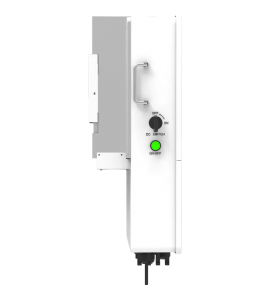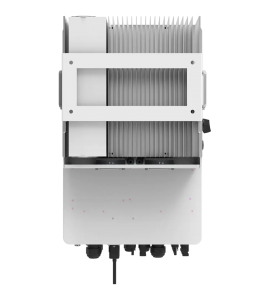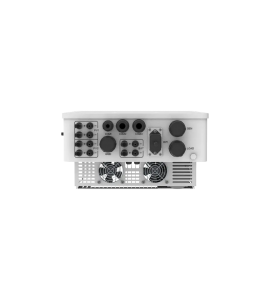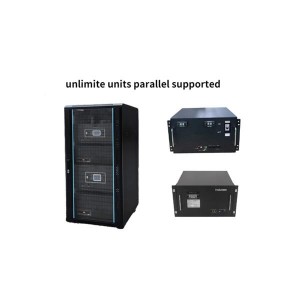

Deye 5kW Three Phase High Voltage Hybrid Solar Inverter
ABOUT
Deye 5kW Three Phase High Voltage Hybrid Solar Inverter
| Model | SUN-5K-SG01HP3-EU-AM2 |
| Battery Input Data | |
| Battery Type | Lithium-ion |
| Battery Voltage Range (V) | 160~700V |
| Max. Charging Current (A) | 37 |
| Max. Discharging Current (A) | 37 |
| Number of battery input | 1 |
| Charging Strategy for Li-Ion Battery | Self-adaption to BMS |
| PV String Input Data | |
| Max. DC Input Power (W) | 6500W |
| Max. DV Input Voltage (V) | 1000 |
| Start-up Voltage (V) | 180V |
| MPPT Range (V) | 150V-850V |
| Full Load DC Voltage Range (V) | 195-850 |
| Rated DC Input Voltage (V) | 600 |
| PV Input Current (A) | 20A+20A |
| Max. PV ISC (A) | 30A+30A |
| Number of MPPT / Strings per MPPT | 2/1 |
| AC Output Data | |
| Rated AC Output and UPS Power (W) | 5000W |
| Max. AC Output Power (W) | 5500W |
| Peak Power (off grid) | 1.5 times of rated power, 10 S |
| AC Output Rated Current (A) | 7.6/7.3 |
| Max. AC Current (A) | 13 |
| Max. Continuous AC Passthrough (A) | 40A |
| Output Frequency and Voltage | 50/60Hz;3L/N/PE 220/380Vac,230/400Vac |
| Grid Type | Three Phase |
| Current Harmonic Distortion | <0.5%1n |
| Efficiency | |
| Max. Efficiency | 97.60% |
| Euro Efficiency | 97.00% |
| MPPT Efficiency | 99.90% |
| Protection | |
| PV Input Lightning Protection | Integrated |
| Anti-islanding Protection | Integrated |
| PV String Input Reverse Polarity Protection | Integrated |
| Insulation Resistor Detection | Integrated |
| Residual Current Monitoring Unit | Integrated |
| Output Over Current Protection | Integrated |
| Output Shorted Protection | Integrated |
| Output Over Voltage Protection | DC Type II / AC Type Ⅲ |
| Surge protection | Integrated |
| Certifications and Standards | |
| Grid Regulation | VDE4105, IEC61727/62116, VDE0126, AS4777.2, CEI 0 21, EN50549-1, G98, G99, C10-11, UNE217002, NBR16149/NBR16150 |
| Safety EMC / Standard | IEC/EN 61000-6-1/2/3/4, IEC/EN 62109-1, IEC/EN 62109-2 |
| General Data | |
| Operating Temperature Range (℃) | -45~60℃, >45℃ Derating |
| Cooling | Smart cooling |
| Noise (dB) | <55 dB |
| Communication with BMS | RS485; CAN |
| Weight (kg) | 30.5 |
| Size (mm) | 408W×638H×237D |
| Protection Degree | IP65 |
| Installation Style | Wall-mounted |
| Warranty | 5 years |
The inverter is a converter that converts DC power (battery, storage battery) into constant frequency and constant voltage or frequency modulation and voltage modulation AC (generally 220V, 50Hz sine wave). It consists of hybrid solar inverter bridge, control logic and filter circuit. Widely used in air conditioners, home theaters, electric grinding wheels, electric tools, sewing machines, DVD, VCD, computers, TVs, washing machines, range hoods, refrigerators, VCRs, massagers, fans, lighting, etc.
As a DC to AC transformer, the hybrid solar inverter is actually a process of voltage inversion with the converter. The converter converts the AC voltage of the grid into a stable 12V DC output, while the solar inverter converts the 12V DC voltage output by the Adapter into a high-frequency high-voltage AC; both parts also use a more frequently used pulse width modulation (PWM) technique. Its core part is a PWM integrated controller, the Adapter uses UC3842, and the inverter uses TL5001 chip.
Solar inverters are the core components of photovoltaic power generation and energy storage, and the corresponding market space will exceed 100 billion in 2023. It is mainly made of electronic components (IGBT power semiconductors, capacitors, resistors, reactors, PCBs, etc.), structural parts (cabinets, chassis, etc.) and auxiliary materials. And the hybrid solar inverter production process includes raw material procurement and inspection, electronic parts pre-processing, complete machine assembly, testing, and complete machine packaging. The inverter belongs to the power electronics technology industry chain, and its development depends on the development of comprehensive technologies such as power semiconductor devices, circuit technology, computer technology, and modern control technology.
The inverter is connected to the AC and DC system, which affects the revenue and power quality of the power station. Photovoltaic modules generate direct current, and the power grid and main loads are all in the form of alternating current. The inverter is the core equipment that realizes the conversion of direct current to alternating current output by the modules, and at the same time controls and maintains the maximum output of the module power. Its reliability directly affects the power station revenue, and the output characteristics affect the electric energy quality.
